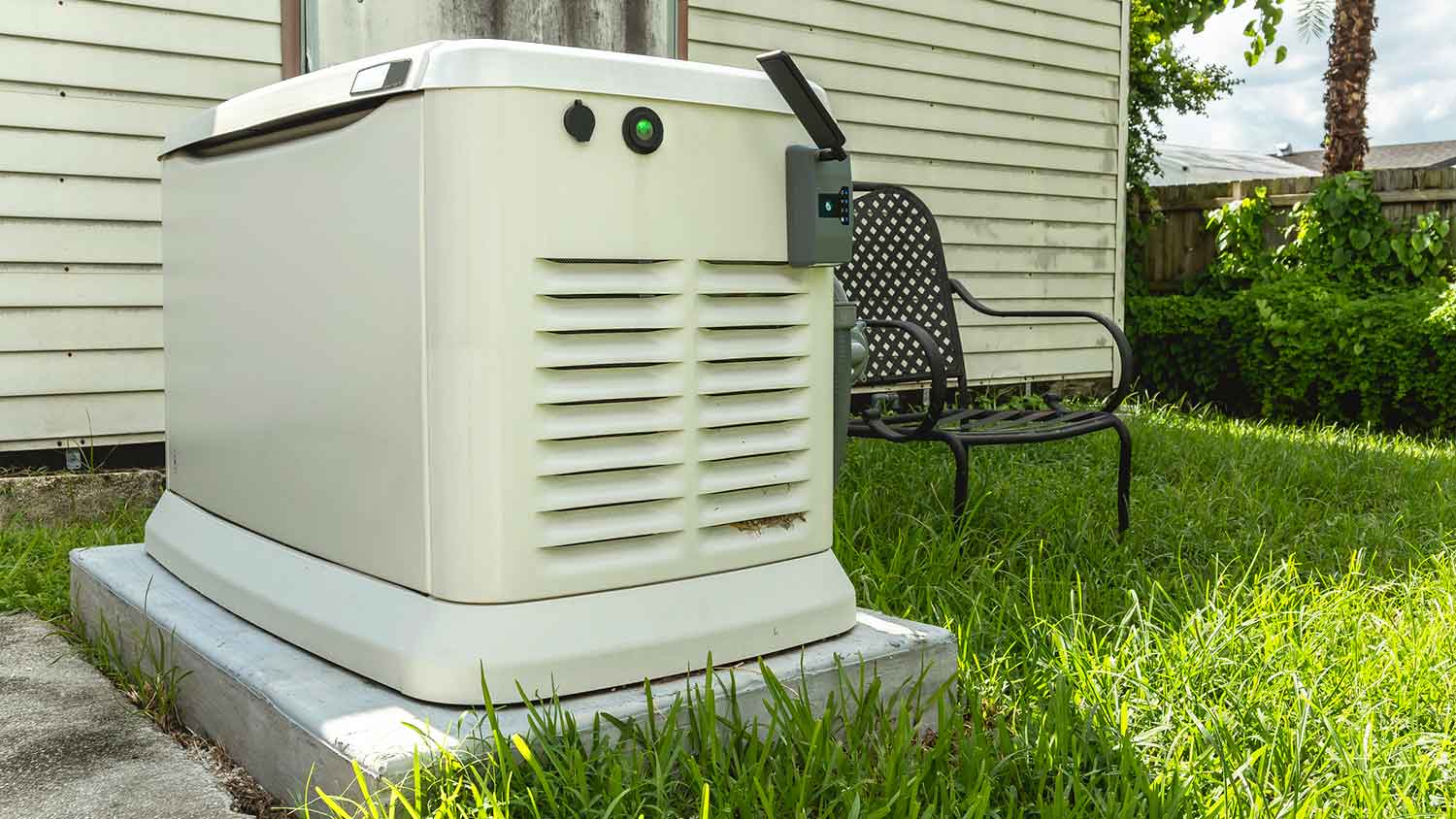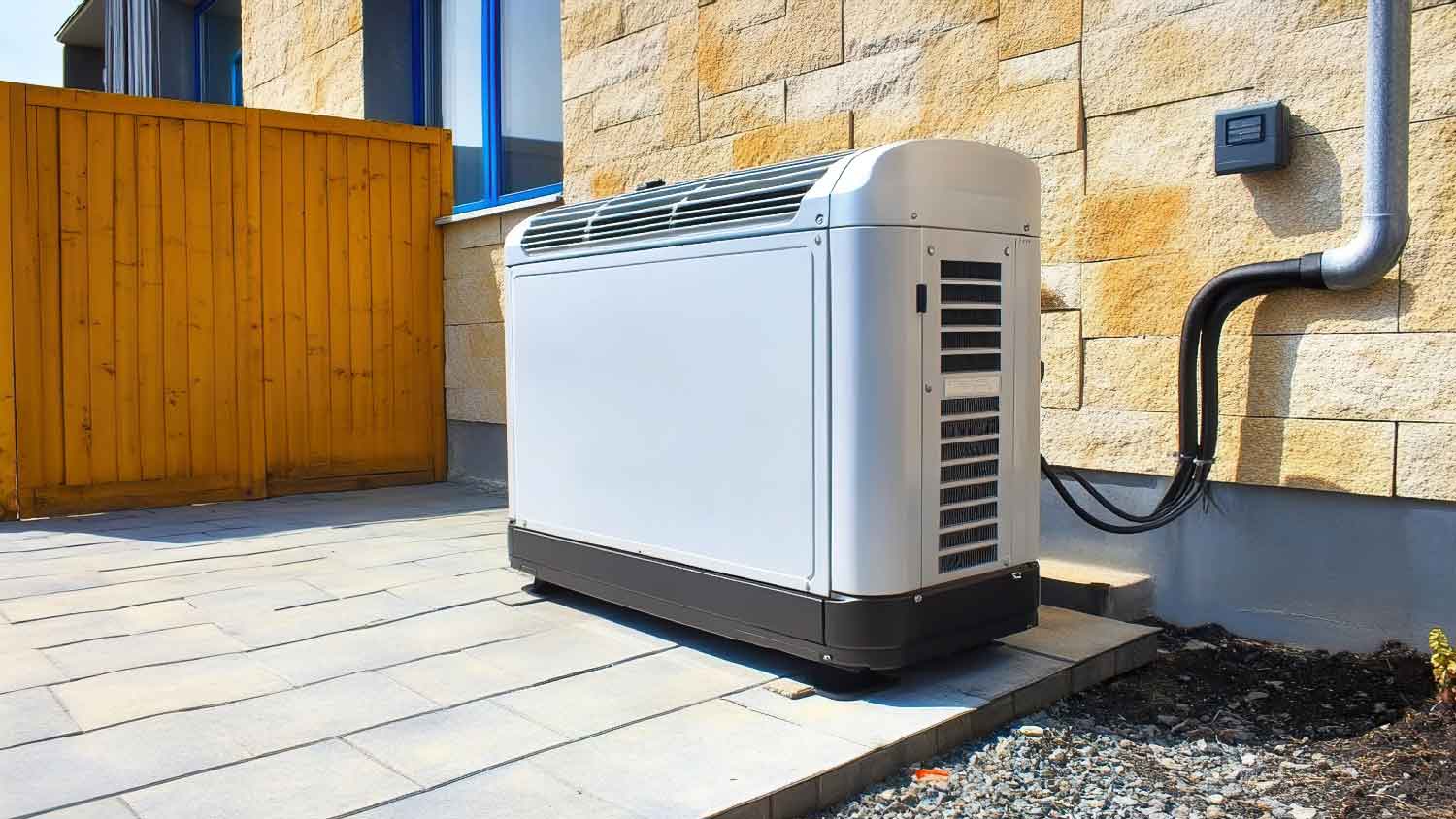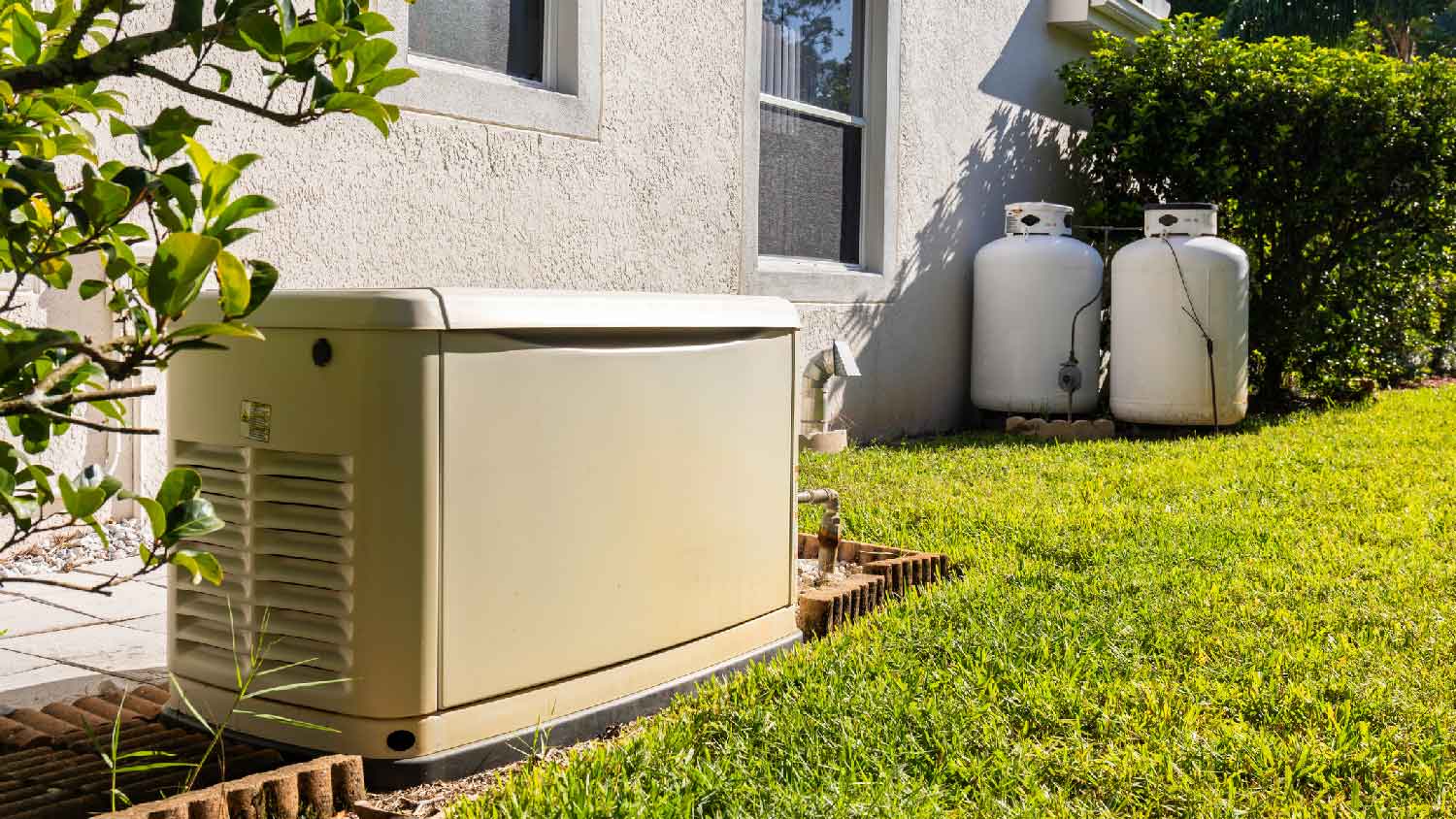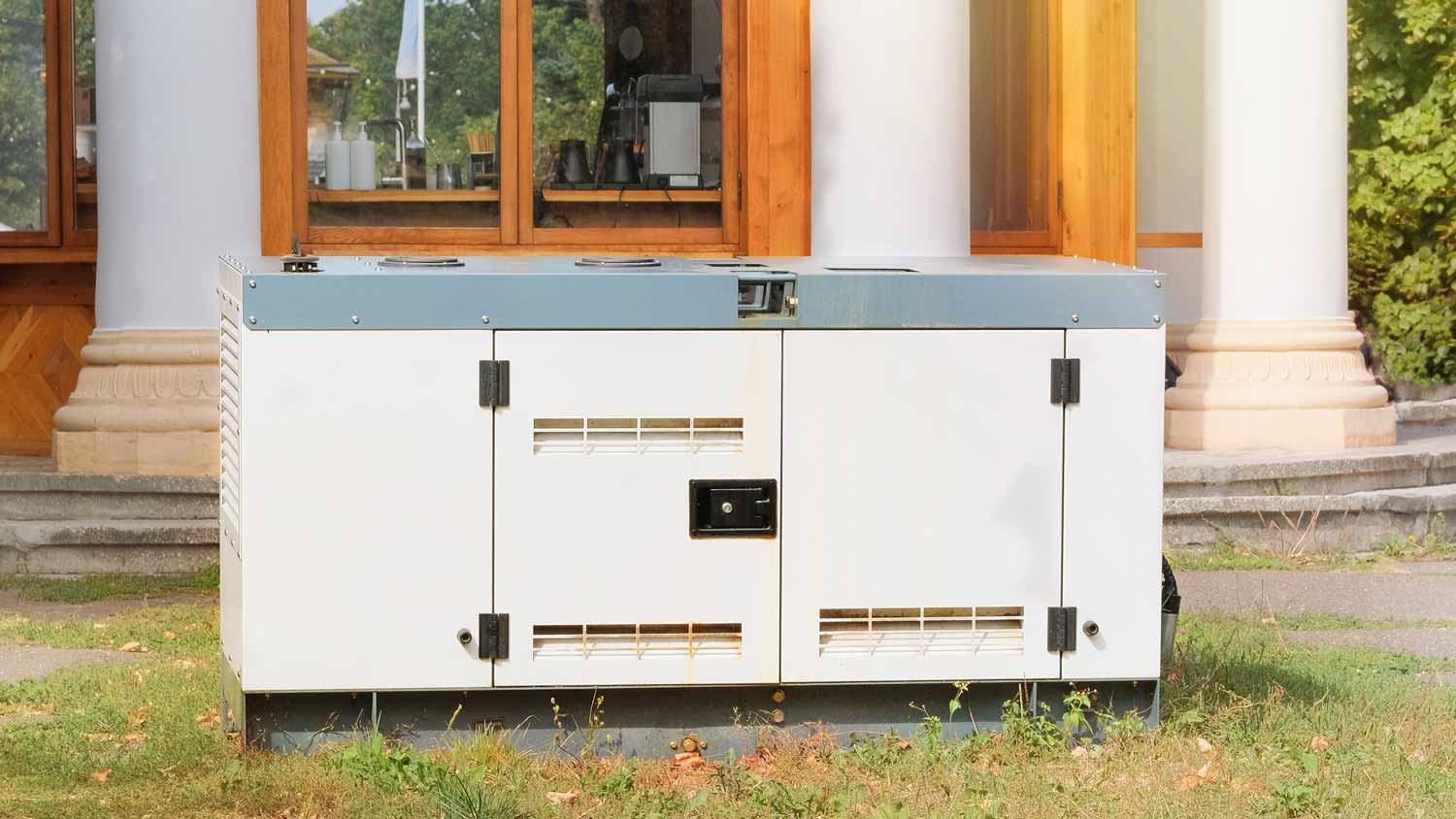How Much Propane Does a Whole-House Generator Use?
No need to stay in the dark—learn how much gas you need to turn the lights back on


The amount of propane a whole-house generator uses depends on the size of the generator, the size of the house, and how often the generator is used.
Most 10kW generators use 1 to 1½ gallons of propane an hour, while a 22kW generator uses anywhere from 2 to 3 gallons per hour.
You can purchase your own propane tank or rent one from a supplier for an annual fee and the cost of installation.
Whether you live in an area with regular blackouts or only endure a few power outages a year, it helps to know how much propane a whole-house generator uses so you can be prepared when the lights go out. Our guide will help you determine propane usage for whole-house generators to stay prepared for when you need it most.
Average Propane Usage for Whole-House Generators
It’s important to keep in mind that the amount of propane a whole-house generator uses depends on the size of the generator, home size, and how often you use the generator. However, most 10kW generators use 1 to 1½ gallons of propane per hour, while a 22kW generator uses between 2 to 3 gallons of propane per hour.
Factors That Affect How Much Propane Your Generator Uses

We’ve broken down the common propane-usage factors so you can determine which ones apply to your whole-house generator.
Size of the Home
The type of generator you need is determined by the size of your home and how much power it needs to run your HVAC, electrical, water heater, and common appliances. If you’re unsure how to calculate it yourself, consider reaching out to your local generator contractor to get their input. Then, your contractor can tell you how much propane to have on hand to fuel the generator when it’s running at full capacity.
Load Demand
The higher your electrical demand, the more propane you’ll need to fuel your generator. Calculate your electrical load by taking stock of the major appliances and systems in your home, such as HVAC unit, water heater, refrigerator, lights, and other essential items. This way, you can account for that electricity when purchasing your generator or the propane for the generator.
Size of Generator
Larger generators consume more propane than smaller generators, so it helps to know the exact wattage of your generator. For example, a 10kW generator might use anywhere from 1 to 1.5 gallons of propane an hour, while a 22kW generator will use closer to 2 to 3 gallons of propane an hour.
Usage
If you only experience a few power outages per year, a few gallons of propane can likely last through a few storm seasons. On the other hand, areas that are regularly affected by hurricanes or tornadoes and subsequent power outages will require more propane to last until storm season has passed. Take into account your region’s weather patterns when factoring how much propane you’ll need to keep your generator running on a regular basis.
Buying vs. Leasing a Propane Tank
If you use propane enough to justify purchasing your own tank, it will save more money in the long run. However, it will leave you on the hook for maintenance and finding professionals to service or repair the tank when needed. However, if you only need propane for a handful of outages per year, you can rent tanks without any upfront fees but may require you to refill the tank. Most homeowners pay between $600 and $1,200 to purchase and install a propane tank, while renting costs about $250 for installation and sometimes an annual fee upwards of $100.
Frequently Asked Questions
You can expect to pay anywhere from $600 to $1,600 to fill a 500-gallon propane tank, depending on where you live. Keep in mind that most tanks can only be filled at about 80 percent, so you may not have a full 500 gallons once you’ve paid for the propane.
Federal law requires tank owners to replace or requalify propane tanks every 5 to 10 years since tanks can rust or leak over time. Check the manufacturer’s date on your tank to ensure you’re staying within legal limits and not putting your home at risk for fire or other dangerous hazards.















